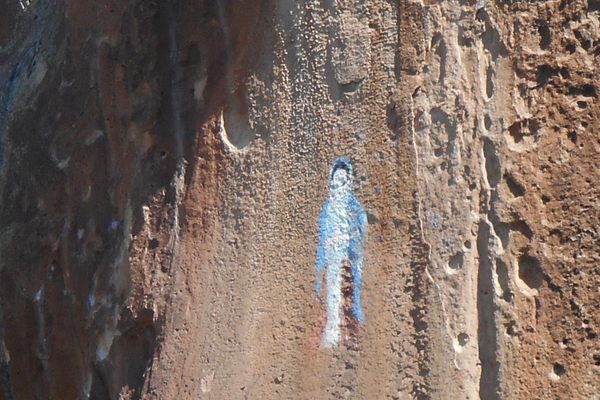About
In 1968, in the rural district of El Palmar de Troya in Utrera, near Seville, some girls picking flowers saw a vision of the Virgin Mary. As word of the sight spread, the area began to attract both seekers and seers, among them a layman from Seville, Clemente Domínguez.
Domínguez reported visions of his own and capitalized on the religious fervor around him. According to his visions, the Catholic Church had become progressive and heretical. Upon the death of Pope Paul VI in 1978, Domínguez appointed himself as successor, Pope Gregory XVII. He excommunicated John Paul II as a "usurper, apostate, antipope traitor and precursor of the Antichrist."
The religious organization he founded was called Carmelitas de la Santa Faz or the Order of Carmelites of the Holy Face, and eventually became known as the Palmarian Catholic Church. For his followers, the schism in Catholicism came not from them but from the Vatican, and Domínguez established a series of rigid norms, from the instauration of the mass in Latin, to conservative dress, to banning cinemas, television, the press, and contact with people outside the sect. Despite all this, the group became known for numerous sexual scandals, often involving Domínguez himself. None of this has dissuaded its followers, and 70 percent of the sect's funding comes from abroad. As one might expect, the Palmarian Church also makes an appearance in the work The Da Vinci Code author Dan Brown.
Upon Domínguez's death in 2005, Manuel Alonso Corral proclaimed himself Pope Peter II. He was succeeded in 2011 Jesus Ginés, nicknamed Father Sergio María, who became Gregory XVIII until he resigned in 2016. The Palmarian Pope is now Swiss Joseph Odermatt, or Peter III.
The Basilica of the Church of El Palmar de Troya is an impressive building, started in 1976 and completed 30 years later. It is surrounded by a wall of 2,000 feet in diameter and 12 feet high.
Related Tags
Know Before You Go
It is possible to enter the complex with certain restrictions. Men must wear long pants (not jeans), and shirts buttoned almost to the top, and at the sleeves. Women must wear a skirt (no pants) that covers the ankles, and a head scarf. Photos are strictly prohibited.
Community Contributors
Added By
Published
July 20, 2020
Sources
- https://es.wikipedia.org/wiki/Iglesia_palmariana
- https://laiglesiapalmariana.blogspot.com/2012/12/el-por-que-de-la-iglesia-catolica.html
- https://www.caninomag.es/las-10-cosas-debes-saber-la-iglesia-del-palmar-troya/
- https://sevilla.abc.es/provincia/sevi-palmar-troya-farsa-agoniza-50-anos-despues-201804230742_noticia.html
- https://en.wikipedia.org/wiki/El_Palmar_de_Troya
- https://es.wikipedia.org/wiki/Iglesia_palmariana
- https://sevilla.abc.es/provincia/sevi-palmar-troya-farsa-agoniza-50-anos-despues-201804230742_noticia.html
- https://www.caninomag.es/las-10-cosas-debes-saber-la-iglesia-del-palmar-troya/






















